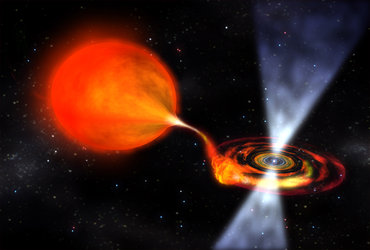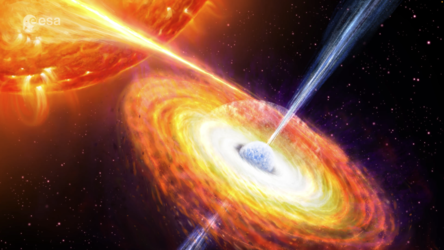
Neutron star merger
Artist’s impression of two neutron stars – the compact remnants of what were once massive stars – spiralling towards each other and eventually merging.
The collision of these dense, compact objects produced gravitational waves – fluctuations in the fabric of spacetime – that were detected by the LIGO/Virgo collaboration on 17 August 2017. A couple of seconds after that, ESA's Integral and NASA’s Fermi satellites detected a burst of gamma rays, the luminous counterpart to the gravitational waves emitted by the cosmic clash.
About half a day after the detections, scientists at various optical observatories, including the European Southern Observatory's telescopes in Chile, spotted something new near the core of galaxy NGC 4993. It was a kilonova, the aftermath of the neutron star collision.
This is the first discovery of gravitational waves and light coming from the same source.
Full story: Integral sees blast travelling with gravitational waves






